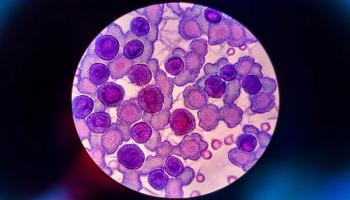
AJPB® Translating Evidence-Based Research Into Value-Based Decisions®
- May/June 2016
- Volume 8
- Issue 3
Challenges with the Introduction of Biosimilars in the US
With the introduction of biosimilars in the United States, there are several significant issues that will challenge those involved in formulary committees and benefit plans, as well as prescribers and pharmacists.
ABSTRACT
With the introduction of biosimilars in the United States, there are several significant areas that will be challenges to those involved in formulary committees and benefit plans, as well as prescribers and pharmacists. These include:
Extrapolation of indications: benefit plans and formulary committees will need to determine the placement of biosimilars on formularies based on indications and criteria for use. Given the abbreviated approval pathway, the extrapolation of indications will be a significant area of consideration.
Selection of reliable manufacturers: given the potential risks of immunogenicity associated with switching biological products, it will be important to select biosimilars manufactured by companies with a good track record of supply reliability and with demonstrated expertise in biologic manufacturing.
Interchangeability/substitution: data and policies/regulations on product substitution and therapeutic interchanges are evolving, and will need to be considered based on practice standards, as well as state laws.
Challenges with naming: the currently proposed approach to biosimilar naming has the potential to create some unintended consequences. Understanding these challenges will allow the development of strategies to prevent inadvertent switching and improve consistency in therapy.
Benefit plans, formulary committees, prescribers, and pharmacists will all need to be aware of these challenges in order to assure the safest and most appropriate use of biosimilars in the US health system.
Am J Pharm Benefits. 2016;8(3):93-96
With the introduction of the second biosimilar, infliximab-dyyb, in the United States, in April 2016,1 there is increasing awareness of some significant issues and challenges that prescribers, pharmacists, formulary committees, and benefit plans will need to consider. Since the introduction of the Biologics Price Competition and Innovation (BPCI) Act in 2010, as a component of the Accountable Care Act, the FDA has continued to develop regulatory guidance for the approval of biosimilar products.2
At the same time, some states have adopted legislation related to the substitution of biosimilar products, as existing pharmacy practice acts often refer only to generic drugs and do not include biosimilars specifically.3 Guidance on the requirements for an interchangeable designation by the FDA, and issues related to the naming of biosimilars, are also key considerations with the successful introduction of these agents into the US healthcare system. This paper will outline some of the key challenges that must be considered by healthcare providers, benefit plans, and formulary committees with the introduction of these agents.
Extrapolation of Indications
In most instances, it is expected that a biosimilar will be approved with the same indications as the reference biologic agent. However, it is possible that the FDA could approve biosimilars with fewer indications than the reference product.4 In addition, the abbreviated pathway for biosimilar approval is intentionally designed to eliminate the need to reproduce all of the clinical safety and efficacy trials that were done by the reference product. The goal of the abbreviated pathway is not to demonstrate safety and efficacy, but to eliminate any residual doubt about the similarity of the biosimilar and the reference product with regards to efficacy and safety.5
Extrapolation is a key concept in an abbreviated pathway, as it reduces the need for duplicate clinical studies that are expensive and time consuming. Clinical studies are indicated to confirm comparable safety and efficacy, and then extrapolation is used if the mechanism and site of action are considered identical across different indications. However, additional studies may be necessary to justify use when the mechanism of action or target receptors are not completely clear. Formulary committees will need to determine whether to approve a biosimilar for all of the same indications as the reference biologic.6
In addition, biologic drugs are sometimes used for non-FDA-approved indications. Formulary committees will need to determine whether the biosimilar can be used for the unapproved indications in the same manner as the reference product. It is likely that knowledge of the precise mechanism of action and the receptor site of action will be key factors in the willingness of formulary committees to extrapolate indications. National guidelines will also be influential in decision making for this area. Prescription benefit plans and payers will likely take a similar approach in making coverage and reimbursement decisions.
Manufacturer Reliability
Given that there is at least a theoretical risk of immunogenicity when biologic medicines are switched, the reliability of supply of a biosimilar is going to be an important factor in formulary decisions.7 In a setting where there may be multiple approved biosimilars from various manufacturers on the market, providers and payers are likely to seek to create policies that will encourage the use of a consistent product from a reliable manufacturer in order to minimize the need for switching due to supply disruptions.
This will include a manufacturer’s experience in producing biologic products, their history of drug shortages, and the availability of redundant manufacturing facilities. There are several other factors related to manufacturers that will also be considered, especially by pharmacy and therapeutics committees when considering biosimilar medications.8 Included, among these, are the manufacturer’s ability to provide supply chain security and anti-counterfeit measures into their packaging to prevent diversion, as well as the manufacturer’s support for patient assistance programs, given the significant patient out-of-pocket expense for many biologic agents.
Interchangeability/Substitution
Unlike the regulatory approval process, in Europe, through the European Medicines Agency (EMA), the BPCI Act, in the United States, created 2 levels of biosimilar medications: 1) a biosimilar that would not be substitutable at the pharmacy level without the involvement of the prescriber; and 2) an interchangeable biosimilar that could be substituted without intervention with the prescriber (similar to generic small molecule drugs). An interchangeable biosimilar is a biosimilar that can be expected to produce the same clinical result in any given patient, and for which there is no additional risk to safety or efficacy with repeated switching versus consistent use of the reference product.9,10
The first 2 biosimilars in the US, filgrastim-sndz and infliximab-dyyb, were approved as biosimilars without the interchangeable biosimilar designation. Therefore, they cannot be substituted at the pharmacy without the intervention of the prescriber. At the time of this paper, the FDA has not yet published specific guidance regarding the required studies that must be conducted in order to achieve the interchangeable biosimilar approval.
In Europe, where biosimilars have been available for approximately 10 years, there has not been extensive experience with substitution or switching practices. However, recently, there has been increased focus on this area. A phase III randomized, double-blind, multicenter study (PIONEER; NCT01519700) in patients with breast cancer in Russia, Ukraine, Hungary, Latvia, Slovakia, and the Czech Republic, treated with myelosuppressive chemotherapy, showed no increased risk to safety (development of anti-recombinant human G-CSF antibodies, and incidence of treatment-emergent adverse events) or efficacy (prevention of neutropenia) with switching between the reference filgrastim (Neupogen) and the biosimilar filgrastim-sndz (Zarxio), versus consistent use of either product.11
Other randomized clinical trials have adopted this crossover design to evaluate the interchangeability between infliximab (Remicade) and CT-P13 (Remsima, Inflectra), a biosimilar to Remicade, in patients with rheumatoid arthritis across 19 countries in Europe, Asia, Latin America, and the Middle East, (PLANETRA; NCT01217086), and ankylosing spondylitis (PLANETAS; NCT01220518).12,13
Another randomized, double-blind “switching” study, (NOR-SWITCH; NCT02148640), is ongoing in Norway to evaluate the interchangeability between infliximab (Remicade) and biosimilar CT-P13 (Remsima, Inflectra) in rheumatoid arthritis and other indications, including spondyloarthritis, psoriatic arthritis, ulcerative colitis, Crohn’s disease, and chronic plaque psoriasis.14,15 Results from the NOR-SWITCH study are expected in early 2017.
Despite the lack of definitive guidance or completed studies on the safety and efficacy of biosimilar products, there appears to be growing comfort with this practice, as more clinical experience has been gained with these products in Europe. Evidence of this was published in a clinical guideline by the British Society of Gastroenterology, in February 2016, on the use of biosimilar infliximab in patients with inflammatory bowel disease that was supportive of the equivalence of the reference and biosimilar products in clinical practice, including reference to switching.16 The guideline states that “there is sufficient evidence to recommend that patients who are in a stable clinical response or remission on Remicade therapy can be switched to Remsima or Inflectra at the same dose and dose interval.”
While in the United States there are specific legal and regulatory requirements that must be followed at a state level related to product substitution, organized health systems will likely adopt formulary approaches through their medical staff governance, pharmacy, and therapeutics committees to address these issues under the principle of “therapeutic interchange.” Therapeutic interchange is defined as the dispensing of a drug that is therapeutically equivalent to, but chemically different from, the drug originally prescribed by a physician or other authorized prescriber. In most cases, the interchanged drugs have close similarity in efficacy and safety profiles.17
This approach allows formularies to be streamlined so as not to carry multiple agents that are extremely similar from a therapeutic perspective, and this strategy has been frequently employed with different biologics in the same class, such as insulins and erythropoietic stimulating proteins. It is likely that many health systems will extend this approach to the use of reference biologics and biosimilars within the health system as they are approved.
The use of therapeutic equivalence programs within health systems will still present some practical challenges. One fundamental decision to be made is whether therapeutic substitution will be done for all patients, or only for those who are new to therapy. Some may decide to maintain patients on existing therapy in order to minimize product switching to reduce the potential for immunogenicity. Others may feel that the risks of switching are minimal and will decide to move all patients to the formulary preferred agent, regardless of previous therapy.
Another issue related to product switching will be in patients who are initiated on self-administered biologics while in the hospital. While a biologic/biosimilar may be the preferred agent on the hospital formulary, situations could occur where the outpatient prescription drug plan may have a different preferred agent. In this case, it is likely that there may be prior authorizations or co-pay/co-insurance differentials that could be barriers to the patient continuing on the agent started in the hospital.
Also, given that there are not yet interchangeable biosimilars, any product change that occurs after discharge would need to involve the intervention of the prescriber. Therefore, any initiation of a biologic agent in the institutional setting should be done with knowledge of the patient’s outpatient prescription drug benefit in order to prevent the need for switching agents at, or shortly after, discharge.
Product Naming and Pharmacovigilance
There has been much debate over the optimal naming convention for biosimilars.18 Some have advocated for a common international nonproprietary name (INN) for the reference biologic and for biosimilars, as this could reduce confusion among prescribers and patients. This approach would likely facilitate the uptake of biosimilars on the market. However, others have expressed concern that this approach could lead to unintended product switching, difficulty in pharmacovigilance, and difficulty in assuring that patients are maintained on the intended products.
The World Health Organization guidelines proposed a system in which a 4-letter biological qualifier (BQ), consisting of randomly generated consonants that are devoid of meaning, are assigned as a suffix to all biologic products.19 The proposed FDA guidance also recommends the use of a unique randomly-generated 4-letter suffix to the INN to differentiate the products.20 This includes adding a suffix to the names of existing reference biologics. This guidance was published after the first biosimilar, filgrastim-sndz, was approved. While a 4-character suffix was used in this case, it was presumably not randomly generated as the “sndz” seemed to indicate the manufacturer, Sandoz.
However, in the case of the second approved biosimilar, infliximab-dyyb, the suffix does appear to be devoid of meaning. The rationale for the suffix is that it will allow for similar products to be grouped together, alphabetically, in electronic ordering and dispensing systems. Having a different suffix should permit differentiation of specific products during the prescribing, dispensing, and administration phases of the medication use process.
However, there is a fear that the proposed naming convention could slow the uptake of biosimilars in the market and that the use of suffixes devoid of meaning could actually create errors in product selection and make pharmacovigilance efforts less effective. Imagine a situation in which there is a reference product and 2 biosimilars on the market. If all 3 are present in electronic health records, they would be grouped together alphabetically by the INN followed by the suffix.
There is a fear that, due to the lack of meaning of the suffix, prescribers and others may not be clear about which product a patient is actually receiving or which is intended, and perhaps the first product in an e-prescribing list will be selected in error. In the case of small molecule drugs, we have traditionally encouraged the use of only generic names in the ordering, dispensing, and administration components within our electronic health records, however, in the case of biologics, it may be prudent to utilize both the INN/suffix, plus the brand name of the product, in order to prevent wrong product selection errors and to improve pharmacovigilance efforts.
Pharmacy and IT staff will need to be extremely vigilant in configuring electronic systems to help assure that these types of errors are minimized in the prescribing, dispensing, and administration of these agents. In addition, these naming challenges will highlight the need for effective medication reconciliation to assure that the correct product is identified.
Summary
The availability of biosimilars in the United States will reduce costs and improve access to these important agents. However, there are a variety of practical challenges in the adoption of these products by formulary committees, benefit plans, and health systems, and safe and effective integration into the overall medication-use process. Careful consideration of these issues must occur in order to prevent inadvertent switching of products, to assure optimal utilization and access, and to minimize patient risk.
References
- US Food and Drug Administration. FDA approves inflectra, a biosimilar to remicade. FDA website. http://www.fda.gov/NewsEvents/Newsroom/PressAnnouncements/ucm494227.htm. Accessed May 9, 2016.
- US Food and Drug Administration. Information for industry (biosimilars). FDA website.http://www.fda.gov/Drugs/DevelopmentApprovalProcess/HowDrugsareDevelopedandApproved/ApprovalApplications/TherapeuticBiologicApplications/Biosimilars/ucm241720.htm Accessed May 9, 2016.
- National Conference of State Legislatures. State laws and legislation related to biologic medications and substitution of biosimilars. http://www.ncsl.org/research/health/state-laws-and-legislation-related-to-biologic-medications-and-substitution-of-biosimilars.aspx. Accessed May 9, 2016.
- US Food and Drug Administration. Information for healthcare professionals (biosimilars). FDA website.http://www.fda.gov/Drugs/DevelopmentApprovalProcess/HowDrugsareDevelopedandApproved/ApprovalApplications/TherapeuticBiologicApplications/Biosimilars/ucm241719.htm Accessed May 9, 2016.
- McCamish M, Woollett G. The state of the art in the development of biosimilars. Clin Pharmacol Ther. 2012; 91:405-417. doi: 10.1038/clpt.2011.343.
- Gerrard TL, Johnston G, Gaugh D. Biosimilars: extrapolation of clinical use to other indications. Generics and Biosimilars Initiative Journal 2015; published first online: http://gabi-journal.net/biosimilars-extrapolation-of-clinical-use-to-other-indications.html Accessed May 9, 2016.
- Mica A, Mutomba M, Green L. Steps to ensure adequate supply of biological medicines: considerations for the healthcare provider. Generics and Biosimilars Initiative Journal 2013; 2:136-143.
- Griffith N, McBride A, Stevenson JG, Green L. Formulary selection criteria for biosimilars: considerations for US health-system pharmacists. Hosp Pharm. 2014; 49(9):813-825. doi: 10.1310/hpj4909-813.
- US Food and Drug Administration. Sections 7001-7003 (biologics price competition and innovation act of 2009) of the patient protection and affordable care act. US Department of Health and Human Services; c2009. FDA website.http://www.fda.gov/downloads/Drugs/GuidanceComplianceRegulatoryInformation/ucm216146.pdf. Accessed May 9, 2016.
- US Food and Drug Administration. Scientific considerations in demonstrating biosimilarity to a reference product: guidance for industry. US Food and Drug Administration; c2015. FDA website. http://www.fda.gov/downloads/Drugs/GuidanceComplianceRegulatoryInformation/Guidances/UCM291128.pdf. Accessed May 9, 2016.
- Blackwell K, Semiglazov V, Krasnozhon D, et al. Comparison of EP2006, a filgrastim biosimilar, to the reference: a phase III, randomized, double-blind clinical study in the prevention of severe neutropenia in patients with breast cancer receiving myelosuppressive chemotherapy. Ann Oncol. 2015; 26(9):1948-1953. doi: 10.1093/annonc/mdv281.
- Yoo DH, Prodanovic N, Jaworski J, et al. Efficacy and safety of CT-P13 (biosimilar infliximab) in patients with rheumatoid arthritis: comparison between switching from reference infliximab to CT-P13 and continuing CT-P13 in the PLANETRA extension study. Published online first: Ann Rheum Dis. 2016; 0:1—9. doi:10.1136/annrheumdis-2015-208786.
- Park W, Yoo DH, Jaworski J, et al. Comparable long-term efficacy, as assessed by patient-reported outcomes, safety and pharmacokinetics, of CT-P13 and reference infliximab in patients with ankylosing spondylitis: 54-week results from the randomized, parallel-group PLANETAS study. Arthritis Res Ther. 2016;18:25.
- ClinicalTrials.gov. The NOR-SWITCH Study. https://clinicaltrials.gov/ct2/show/NCT02148640. Accessed May 9, 2016.
- News Medical. New data shows safety and efficacy of biosimilar infliximab treatment in IBD patients. http://www.news-medical.net/news/20150520/New-data-shows-safety-and-efficacy-of-biosimilar-infliximab-treatment-in-IBD-patients.aspx. May, 20, 2015. Accessed May 9, 2016.
- British Society of Gastroenterology. BSG guidance on the use of biosimilar infliximab CT-P13 in IBD. Published February 2016. http://www.bsg.org.uk/clinical/news/bsg-guidance-on-the-use-of-biosimilar-infliximab-ct-p13-in-ibd.html. Accessed May 9, 2016.
- Gray T, Bertch K, Galt K, et al; American Collage of Clinical Pharmacy. Guidelines for therapeutic interchange — 2004. Pharmacotherapy. 2005;25(11):1666-1680.
- Jorgenson JA. “A rose by any other name….”: imperatives for biosimilar naming. Am J Pharm Benefits. 2013;5: 54-56.
- World Health Organization. Biological qualifier: an INN Proposal. October 2015. http://www.who.int/medicines/services/inn/WHO_INN_BQ_proposal_2015.pdf?ua=1. Accessed May 9, 2016.
- US Food and Drug Administration. Nonproprietary naming of biological products. Guidance for industry. FDA website. http://www.fda.gov/downloads/drugs/guidancecomplianceregulatoryinformation/guidances/ucm459987.pdf. Draft guidance published August 2015. Accessed May 9, 2016.
Articles in this issue
Newsletter
Stay informed on drug updates, treatment guidelines, and pharmacy practice trends—subscribe to Pharmacy Times for weekly clinical insights.












































































































































































































